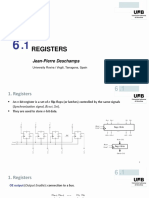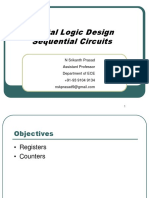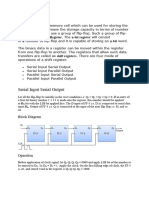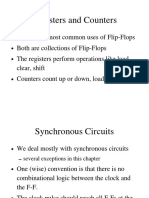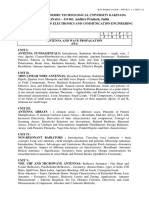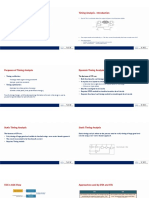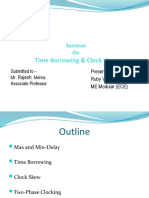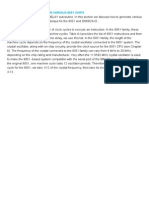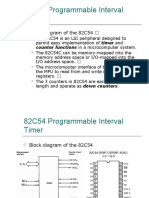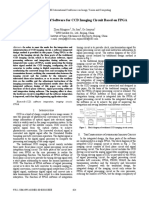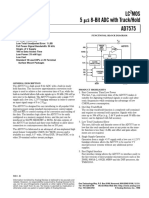0% found this document useful (0 votes)
24 views67 pagesELE225 - Chapter 6 - 08-10-2024
Chapter 6 of the ELE 225 course covers registers and counters, focusing on their functionality, modes of operation, and design principles. It discusses various types of registers, including shift registers and universal shift registers, as well as different counter types such as ripple and synchronous counters. The chapter also includes practical applications like serial addition and BCD counting.
Uploaded by
akincanbolatppCopyright
© © All Rights Reserved
We take content rights seriously. If you suspect this is your content, claim it here.
Available Formats
Download as PPT, PDF, TXT or read online on Scribd
0% found this document useful (0 votes)
24 views67 pagesELE225 - Chapter 6 - 08-10-2024
Chapter 6 of the ELE 225 course covers registers and counters, focusing on their functionality, modes of operation, and design principles. It discusses various types of registers, including shift registers and universal shift registers, as well as different counter types such as ripple and synchronous counters. The chapter also includes practical applications like serial addition and BCD counting.
Uploaded by
akincanbolatppCopyright
© © All Rights Reserved
We take content rights seriously. If you suspect this is your content, claim it here.
Available Formats
Download as PPT, PDF, TXT or read online on Scribd
/ 67

























